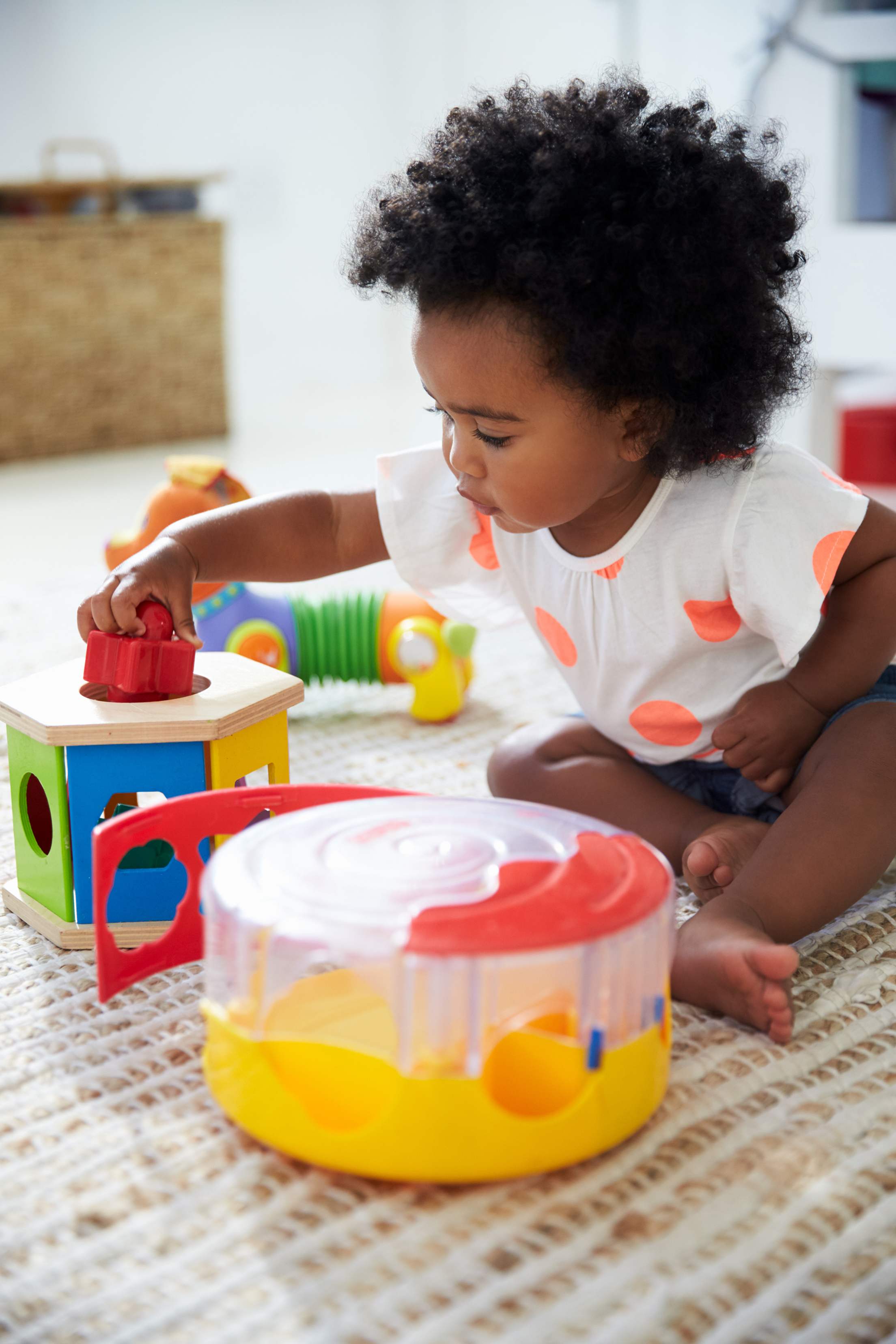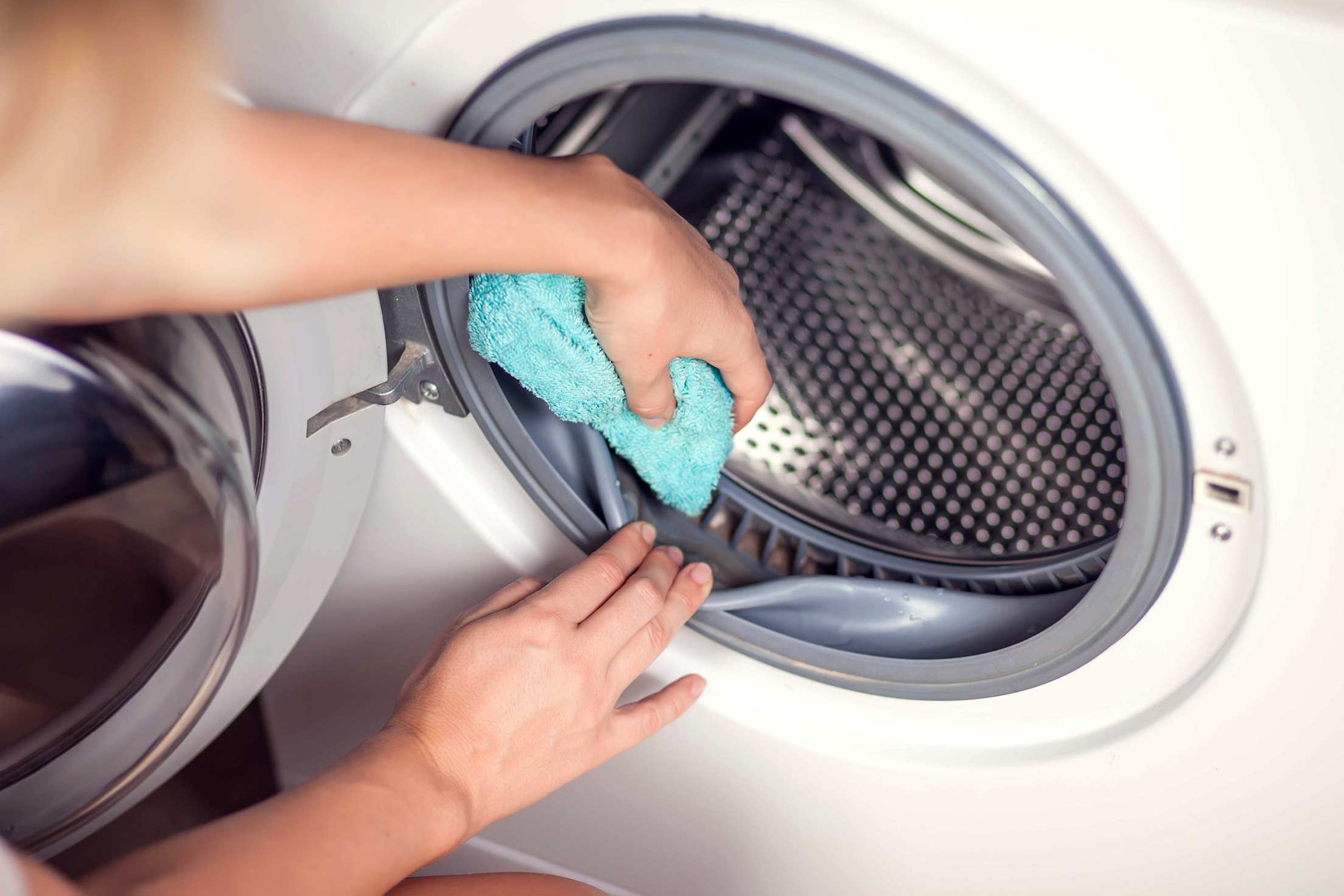
5 Hidden Dangers in Your Home and How to Prevent Them
Here’s how to test for—and avoid—common household hazards.

Your home should be a sanctuary. But certain naturally occurring substances, such as carbon monoxide, lead, and radon can be dangerous to your health when they make their way into your living space.
And often, your senses alone can’t detect the presences of these harmful substances. That’s why it’s important to be proactive and take steps to help keep your home safe. Learn why these five common substances are so worrisome, and the best ways to prevent and remediate them.

Carbon monoxide detectors should be installed near every bedroom.
Carbon Monoxide
Carbon monoxide—an odorless, colorless gas—has been dubbed the invisible killer. The gas is generated by burning wood in fireplaces and fossil fuels in vehicles, cooking and heating devices, and other appliances, according to the National Safety Council (NSC).
Why Carbon Monoxide is Dangerous
As the gas builds up in enclosed spaces like your home, it can cause flu-like symptoms (think: headache, dizziness, vomiting, confusion, and more), and poison people and animals. Each year, more than 400 people die as a result of carbon monoxide poisoning, and 100,000 visit the hospital due to it, according to the Centers for Disease Control and Prevention (CDC).
How to Prevent Carbon Monoxide
Fortunately, prevention tactics for avoiding the build-up of this deadly gas are straightforward:
- Install carbon monoxide detectors. The NSC recommends placing them in the hallway near each bedroom. The best spot is on the wall at least 5 feet off the ground or on the ceiling. If they’re battery operated, test or replace the batteries at the start and end of daylight saving time.
- Pay attention to the alarm. If the alarm on the monitor goes off, immediately leave your home and get yourself to fresh air before calling 911. If you, or anyone in your household, have symptoms of carbon monoxide poisoning, get medical help, advises the CDC.
- Be smart with appliances that burn fuel (wood, gas, oil, coal, charcoal, or other fossil fuels). Never use appliances such as grills or generators inside your home or garage, and don’t use them near a window or door either. (Pressure washers and other gasoline engines should be kept at least 20 feet from any structure when in use.) Don’t heat your home with an oven or cooktop, and don’t burn items in stoves or fireplaces if they aren’t vented. When cooking with a gas stovetop or oven, turn on the range hood over your stove or open a window.
- Never idle your car in the garage.
- Maintain appliances. The Environmental Protection Agency recommends having a technician service heating systems and other fuel-burning appliances such as gas water heaters and stoves annually to ensure they are operating properly.

Long-term exposure to radon can increase the risk for lung cancer.
Radon
Radon is a naturally occurring radioactive gas that can enter homes through cracks in the foundation and gaps around joints, pipes, and other components. Don’t mistake “natural” for safe or non-toxic.
Why Radon is Dangerous
Unlike carbon monoxide, the risk is not acute, points out Dallas L. Jones, former executive director of the American Association of Radon Scientists and Technologists, Inc. The danger is in long-term exposure, which can increase the risk for lung cancer. Radon is the second most common cause of lung cancer after smoking, per the CDC, and it’s responsible for an estimated 20,000 deaths annually. (Radon’s risks are higher if you smoke.)
How to Test for Radon
“People don’t take radon as seriously as perhaps they should because you can’t see it, smell it, or taste it,” Jones says.
Elevated radon levels are present in as many as one in 15 homes, according to the EPA. “There are elevated concentrations in buildings in every state,” Jones says. This means that everyone should get their home tested, regardless of where they live in the United States and whether their home is old or new, Jones says.
To do so, reach out to a certified radon measurement professional. Or, you can purchase a testing device—Jones recommends looking for one that’s approved by the National Radon Proficiency Program—and do it yourself.
The testing process is easy: You’ll place the measuring device from the kit in the lowest level of your home that’s routinely used for the amount of time specified by the kit. Tests can deliver results as quickly as two days later.
Testing for radon often happens when homes are being sold, but the EPA also advises retesting if it’s been more than two years since the last test or if you start using a lower level of your home from where you originally tested (e.g. you’re spending more time in your basement).
How to Remove Radon
If testing reveals radon levels above 2 pCi/L, the EPA recommends taking action to lower the radon in your space. But don’t panic if you find that your home’s radon levels are above 4 picocuries per liter (pCi/L) or higher. A certified professional can help you install a radon reduction system, and many reduce levels in your home by up to 99 percent, according to the EPA.
While radon mitigation isn’t a DIY job since specialized tools and expertise is required, the task is not tremendously expensive, Jones says. Most homes, he says, can be mitigated for under $1,500. (The costs will vary based on where you live, the size of your home, and what mitigation tactics are required.)

Mold thrives in damp spaces, including inside the washing machine and around windows.
Mold
Put simply, mold is a type of fungus that’s found inside and in nature. Unlike some of the other items on this list, mold can sometimes—but not always—be detected by your senses. It can have a distinct musty odor and may be visible.
Why Mold is Dangerous
With moisture, mold can grow unchecked, which can lead to health issues for some people and can also cause damage to your home.
“Our homes can become little petri dishes when microbes can proliferate due to adequate moisture in the indoor environment,” says Doug Hoffman, the executive director of the National Organization of Remediators and Mold Inspectors. “People react to both the amount of mold and the type of mold.” These reactions include allergic reactions, asthma, and other respiratory issues, according to the EPA.
How to Test for Mold
You can test for mold, but it’s not necessary, according to the EPA's guide to mold. If you think you have mold, you probably do—generally, you can smell its earthy, unpleasant odor and sometimes you can see it growing.
If you do decide to test, hire a professional who can provide both surface and air testing, recommends Hoffman. “Having both tests done gives you a clearer picture of what’s going on in the environment, identifies the specific mold, and helps determine the recommended solution,” he says.
How to Prevent Mold
The key to preventing mold from flourishing in your home is to reduce moisture. To do so, you’ll want to:
- Keep humidity low. Aim for between 30 and 50 percent relative humidity. A dehumidifier can help keep levels low, and a hygrometer, available for sale online and in hardware stores, can help you track humidity levels.
- Fix leaks and address any floods promptly.
- Vent frequently moist areas. Turn on the fan or open windows in areas that are often exposed to moisture when in use, such as bathrooms, laundry rooms, and the kitchen.
- Avoid carpeting in damp or moist areas of your home. Think: the bathroom and basement.
How to Remove Mold
Mold remediation can be a complex or simple task—it depends on how pervasive the mold is, along with its location.
For mold infestations that are smaller than 10 square feet, such as mold in the tub’s grout or under the fridge, you can safely tackle the clean-up yourself, according to the EPA. After eliminating the water source, use detergent to clean up the mold.
For larger areas, or if the mold clean-up will involve in-depth work, such as removing pieces of a wall or ceiling, call in a contractor with mold remediation experience.

Homes built between 1940 and 1970 may have materials with asbestos, including insulation, flooring, and roofing tiles.
Asbestos
Asbestos is the name for several heat- and corrosion-resistant minerals. Beginning around World War II, asbestos was widely used in a variety of products, such as insulation and flooring, because of this durability.
Why Asbestos is Dangerous
When they’re disturbed, asbestos fibers float in the air and can be inhaled. With exposure, the fibers can build up in the lungs and lead to scarring as well as cancer, according to the U.S. National Institutes of Health.
While many uses of asbestos were banned in the 1970s, the minerals are still used in some products—such as roofing shingles and heat-resistant items (such as the walls around wood-burning stoves). The health risks are higher for people who work with asbestos, according to the National Cancer Institute.
But that’s not to say that you should go on a hunt in your home for items made with asbestos: When contained, it’s safe to be around asbestos, according to the Mayo Clinic. It’s when asbestos is disturbed and fibers are released into the air that it can be breathed in, posing a health risk.
How to Test for Asbestos
If your home was built before the 1970s, it’s likely to contain materials with asbestos. But, it’s still possible that materials containing the substance were used in your home, even if it is more modern, since asbestos is still allowed in certain building materials.
If you suspect asbestos in your home, leave testing to the experts. The United States Consumer Product Safety Commission (CPSC) recommends calling in a professional, who can safely take a sample and test it.
How to Prevent Asbestos from Getting Into the Air
Having asbestos in your home only presents a problem if it’s not contained, per the CPSC. If it’s contained, you can leave it be.
If, however, materials are fraying or damaged and you’re concerned that they might contain asbestos, the EPA recommends that you reach out to an accredited asbestos inspector or contractor, who can help you determine and carry out next steps.
Smart Tip: State-level agencies often have resources to help you find a pro.
Repairs can take one of two forms:
- Encapsulation, which uses a sealant to bind or contain asbestos fibers.
- Enclosure, where other materials are used to cover the asbestos so no fibers can be released.
Note that in both methods, you’re not removing the asbestos—you’re simply preventing a situation where the fibers can be released and inhaled. Both treatment tactics require a professional, and aren’t DIY jobs. You’ll also want to reach out to experts before doing a home renovation so you don’t inadvertently disturb asbestos.

Easy-to-use tests can let you know if there's lead in your home's paint.
Lead
This naturally occurring element can be found in the air, soil, and water. Lead was commonly used in paint until it was banned in 1978. That means if your home pre-dates the late ‘70s, there may be lead-based paint buried under paint layers from more recent decades.
Why Lead Is Dangerous
Lead is highly toxic, and even small amounts can be dangerous. It’s considered particularly dangerous for children, since lead can severely affect their physical and mental development. Children are also at higher risk because they may be more likely to put their hands in their mouth after coming into contact with chipping paint from walls or other items that contain lead, according to the CDC.
That said, as with asbestos, lead isn’t dangerous when it remains undisturbed, points out Nick Gromicko, founder of the International Association of Certified Home Inspectors. "Lead paint that isn't peeling or is painted over really can't harm you," Gromicko says.
Paint isn’t the only risk: Lead is also sometimes found in soil, water pipes, and imported candies.
How to Test for Lead
If your home predates the 1970s, the EPA encourages testing.
- Test your water. To ascertain the safety of your water, and the pipes that carry it into your home, you can test your water with an at-home kit.
- Test paint. You can also have your home tested to see if there are sources of lead. Use this search form from the EPA to find a certified professional to tackle this task. Or, you can do it yourself with an EPA-approved test kit.
- Test your soil. If you suspect your garden’s soil has high lead levels, you can send a sample to a lab for testing. Places that typically have higher levels in the soil include homes near a busy road that’s been in place for more than 40 years (when lead was included in gasoline) or gardens that are close to exterior walls that may previously have been coated in lead paint, according to the Soil Society of America. However, even if you do have lead in your soil, eating fruits and vegetables grown in it is unlikely to be a problem, per the Society. You can limit your risk by washing your produce in fresh water before eating it and thoroughly washing your hands after gardening.
How to Prevent Lead Exposure
The best strategy when it comes to lead is prevention. Follow these tips to minimize danger to yourself and your loved ones:
- Get your home tested. Check for hazards in your home and drinking water using the testing options above.
- Leave your shoes at the door. If you are concerned about lead-contaminated soil, take off your shoes at the door. Also, have kids play in a sandbox instead of soil (and cover the sandbox when it’s not playtime).
- Practice good hygiene. Make sure to wash your kids’ hands (particularly after they play outside) as well as washing toys often. Clean up dust frequently with a damp cloth or mop.
- Run cold water. With older plumbing, run cold water for a minute before using.
- Eat healthy: Diets rich in calcium, vitamin C, and iron may help prevent lead absorption in kids.
Whether you own or rent your home, protect your personal property with AAA Insurance.